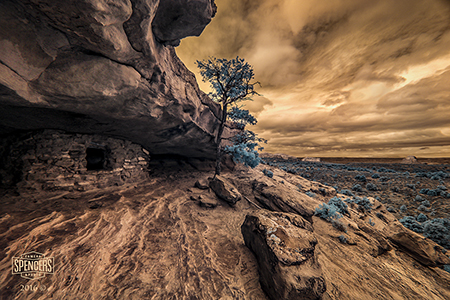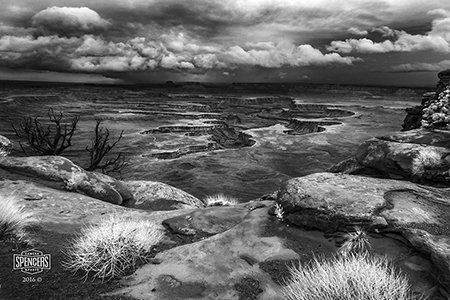total solar eclipse. Our offices will reopen on April 11th at 10:00 AM local time. We apologize for any inconvenience.
Recommended Infrared cameras.
What makes a great full-time infrared camera?

What should you look for when choosing a modified full-time/dedicated infrared camera? We have a few recommendations and suggestions for you. As the old saying goes, "The best camera is the one you have with you." Well, we have a lot more specific and detailed recommendations when considering which camera to purchase and/or have modified as a Dedicated/Full-Time Infrared camera.
Most important is build quality. Why spend hard earned money on something that will not last or won't handle everyday use. Most major manufacturers produce great camera models but some are better than others. Simply said, weight comparative to size is one somewhat reliable way to determine if the camera is mostly plastic or if it was manufactured with more metal construction. Also, in most cases, you pay for what you get. You can't realistically expect a $300 camera to produce equivalent quality images as a $4000 camera. Personal budget is a consideration as well. We recommend buying a camera that you can afford but without cutting corners on quality.

Functionality limitations are a problem with some cameras. You don't want to send money on a conversion/camera only to be frustrated because it doesn't perform well when capturing in infrared. For instance, some cameras won't work very well with custom white balance settings after being modified. Some are very "noisy" when capturing infrared images. Some have limitations which can affect the use of RAW files and its ability to retain accurate white balance info/settings when importing to Lightroom, Camera RAW or Photoshop. Others work seamlessly in almost every circumstance and almost never cause headaches when shooting or post processing.
Obviously, a camera brand that has a complete line of high quality and fully supported lenses or adaptability of quality lenses is important. Electronic viewfinder vs. optical viewfinder is something to consider. Battery size/capacity, availability of accessories, software compatibility, built-in functionality, white balance capabilities, etc... There are many other factors that need to be considered when choosing which camera is best for you. Over the years we have tested almost every make and model, kept notes and test results, considered personal preference and likability, and have compiled a list of the more recent camera models that we recommend for Infrared only use.
NEW!! Spencer's Camera & Photo now offers reinstallation of the Sensor Cleaning/Dust Reduction System for most camera models . Simply select the re-installation option within the internal filter section when ordering your conversion/camera and the cleaning system will be reinstalled during the conversion process.
**** The Dust Reduction System of most camera models is removed during the conversion process but can be reinstalled at an additional charge. If you don't opt to have the system reinstalled please be sure to disable this function within the settings of your camera. Failure to do so may result in a temporary camera error. If your camera displays a Dust Reduction System error you can still disable the function within the camera menu. ****
Highly Recommended IR Cameras:
These cameras are proven to be the best models because for excellent performance at IR sensitivity, custom white balance functions, overall build quality, compatibility with software and accessories, built-in functionality, battery capacity, and expandability. For the best astrophotography results and performance we recommend that you choose from this list:
- Canon EOS Digital Rebel SL1
- Canon EOS Digital Rebel SL2
- Canon EOS Digital Rebel T5i
- Canon EOS Digital Rebel T6i
- Canon EOS Digital Rebel T6s
- Canon EOS Digital Rebel T7i
- Canon EOS Digital Rebel T8i
- Canon EOS 60D
- Canon EOS 70D
- Canon EOS 77D
- Canon EOS 80D
- Canon EOS 90D
- Canon EOS 6D
- Canon EOS 6D Mark II
- Canon EOS 5D Mark II
- Canon EOS 5D Mark III
- Canon EOS 5D Mark IV
- Canon EOS 5DS
- Canon EOS 5DS-R
- Canon EOS 7D
- Canon EOS 7D Mark II
- Canon 1D X
- Canon 1D X Mark II
- Canon EOS M3
- Canon EOS M5
- Canon EOS M10
- Canon EOS R
- Canon EOS R5
- Canon EOS R5C
- Canon EOS R6
- Canon EOS R6 Mark II
- Canon EOS R7
- Canon EOS R8
- Canon EOS R10
- Canon EOS RP
- Fujifilm X-E2
- Fujifilm X-E2s
- Fujifilm X-T1
- Fujifilm X-T2
- Fujifilm X-T10
- Nikon D500
- Nikon D600
- Nikon D610
- Nikon D700
- Nikon D750
- Nikon D800
- Nikon D810
- Nikon D850
- Nikon Z6
- Nikon Z6 Mark II
- Nikon Z7
- Nikon Z7 Mark II
- Olympus OM-D E-M1
- Olympus OM-D E-M1 Mark II
- Olympus OM-D E-M10
- Olympus OM-D E-M10 Mark II
- Olympus OM-D E-M5
- Olympus OM-D E-M5 Mark II
- Pentax K-1
- Pentax K-S2
- Sony A6000
- Sony A6300
- Sony A6500
- Sony A6300
- Sony A6500
- Sony NEX7
- Sony A7
- Sony A7 II
- Sony A7 III
- Sony A7 IV
- Sony A7R
- Sony A7S
- Sony A7S Mark II
- Sony A7S Mark III
- Sony A99 Mark II
Recommended IR Cameras:
These cameras are great but simply are not quite as good as the "Highly" recommended cameras. They may lack slightly in performance, build quality, image quality, battery capacity, or other minor reasons. For the most part they will perform very well for Infrared Photography.
- Canon EOS Digital Rebel T1i
- Canon EOS Digital Rebel T2i
- Canon EOS Digital Rebel T3i
- Canon EOS Digital Rebel XS
- Canon EOS Digital Rebel XSi
- Canon EOS 10D
- Canon EOS 20D
- Canon EOS 30D
- Canon EOS 40D
- Canon EOS 50D
- Canon EOS 5D
- Canon EOS M
- Nikon D90
- Nikon D3300
- Nikon D3400
- Nikon D5200
- Nikon D5300
- Nikon D5500
- Nikon D5600
- Nikon D7100
- Nikon D7200
- Nikon D7500
- Nikon D3**
- Nikon D3s**
- Nikon D4**
- Nikon D5**
- Olympus Pen Series cameras.
- Pentax K-30
- Sony A7R Mark II**
- Sony A7R Mark III**
- Sony A7S Mark II**
- Sony A7S Mark III**
- Sony NEX-5
- Sony NEX-5N
The list above isn't meant to be a complete list. It's a list of cameras we know you can use for infrared photography and will be happy with the results. If you are considering a certain camera and have questions concerning its functionality or quality, please contact us. (Which cameras are best for Nightscape and Astrophotography? Here's our recommended Nightscape and Astro camera list: Recommended Cameras for Nightscape and Astrophotography)
**These cameras have a design flaw that will create an infrared light leak after the modification. An infrared emitting sensor built into the shutter mechanism will "bleed" light onto the imaging sensor and is detectable by the sensor once it has been modified to be Infrared Sensitive. This will cause a very poor imaging result especially when shooting long exposures with high ISO settings.
Order an Infrared Conversion Here.
As always, please contact us with any questions regarding this or any other product or service we provide: info@spencerscamera.com



